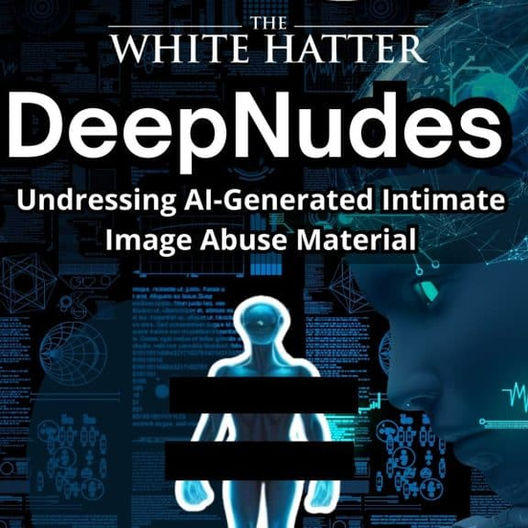When Online Safety “Experts” Create Headlines That Mislead To Support A Narrative
- The White Hatter

- Jun 23
- 4 min read

At The White Hatter, we read a lot of research. It’s part of our job. However, something that really frustrates us is when people, especially those seen as experts in child online safety, reference a study without naming it, or worse, misrepresent what it actually says. That makes it hard for families, and others like us, to check the facts for themselves. Even more concerning, it spreads confusion at a time when clarity is badly needed.
Recently, a well-known online child safety advocate, who has no investigational or research background, posted a bold claim. According to them, new research showed a “causal link” between screen time and anxiety, depression, hyperactivity, and aggression in children under ten. They also said the research made it clear that gaming was “especially problematic” and should be treated as a high-risk behaviour. However, here’s the issue, they didn’t include the name of the study, and when we tracked it down, the actual research didn’t match the claims. Although there was a sliver of truth to what this presenter stated, it wasn’t the whole truth - context it EVERYTHING!
The study in question is titled, “Electronic Screen Use and Children’s Socioemotional Problems: A Systematic Review and Meta-Analysis of Longitudinal Studies.” (1) It reviewed data from just under 300,000 children, which is a very large sample. What the authors actually found was a correlation, not causation as stated by this advocate, between screen use and some socioemotional issues. That’s a critical distinction. Correlation means there’s a statistical relationship between two things. It doesn’t mean one causes the other.
Let’s break this down in a way that’s easy to understand.
The size of the correlation they found was extremely small. The standardized regression coefficient was b = 0.06. In research terms:
A small effect is about 0.10
A medium effect is around 0.30
A large effect is 0.50 or more
A standardized regression coefficient is a number researchers use to show how strongly one thing is related to another, but it’s adjusted to make it easier to compare across different studies or variables.
Here’s a simple way to think about it:
Imagine your child’s school is trying to figure out what most affects student success, maybe it's sleep, screen time, or exercise. Each of these things is measured in different ways such as sleep in hours, screen time in minutes, and exercise in days per week. That makes it hard to directly compare them.
So, researchers “standardize” everything, they turn the different measurements into a common scale, kind of like turning dollars, pesos, and yen all into the same currency. Then, they look at how much a change in one thing (like sleep) is linked to a change in student success.
A standardized regression coefficient tells us how big that link is:
A number close to 0 means there’s very little connection.
A number closer to 1 (or -1) means there’s a strong connection either positive or negative.
This helps people understand which factor matters most, regardless of how it was originally measured.
So in short, it’s a tool researchers use to compare apples, oranges, and bananas, by putting them all on the same scale and seeing which one makes the biggest difference.
At 0.06, this effect is smaller than what’s even considered “small.” That means if screen time does influence socioemotional issues like anxiety or hyperactivity as the online child safety advocate stated, it does so in such a tiny way that you likely wouldn’t notice it in any one child, which they do not explain. The only reason this finding reached “statistical significance” is because the study involved a very large number of kids (which is a good thing). However, big samples can detect very small effects, but small doesn’t mean important, again something that this online child safety advocate does not explain.
To their credit, the authors of the study were clear about this. Here’s what they said in their conclusion:
“Our meta-analysis revealed that screen use leads to socioemotional problems and vice versa. Although overall effect sizes were small-to-moderate, small effects are clinically meaningful when accumulating over time... If children are engaging in modest amounts of screen time, screen time is educational, and protective factors such as sleep, physical activity, and social interactions are not displaced, then there may be few risks of increased socioemotional problems.”
In other words, the study does not say that screen time causes mental health problems in kids as suggested by the online child safety advocate. It doesn’t say gaming is dangerous. It doesn’t say all screens are harmful. What it actually says is that screen time might be linked to certain emotional issues, but the relationship is complex, and the effect is very small. The researchers also stress that context matters. What your child is watching, why they’re watching it, and what else is going on in their life are all much more important than just the number of minutes they spend on a screen.
So what does this mean for parents?
It means we need to be thoughtful, not fearful. The takeaway here isn’t to panic about screens. Instead, focus on BALANCE, something that we have been preaching for years here at the White Hatter. Pay attention to what your child is doing online. Make sure screens aren’t replacing sleep, exercise, or social time. And don’t fall for dramatic headlines that overstate what the science actually says.
Screen use is one part of a much bigger picture. Family environment, peer support, and emotional well-being play a much larger role in shaping your child’s mental health. Let’s keep the conversation grounded in facts and not fear.
Digital Food For Thought
The White Hatter
Facts Not Fear, Facts Not Emotions, Enlighten Not Frighten, Know Tech Not No Tech
References:














